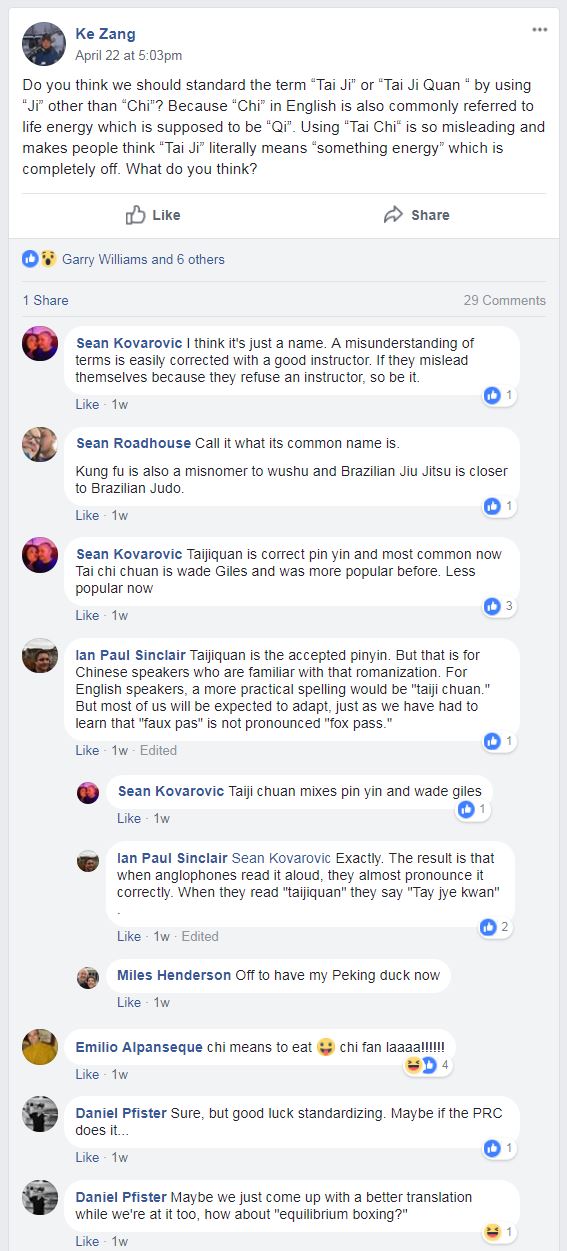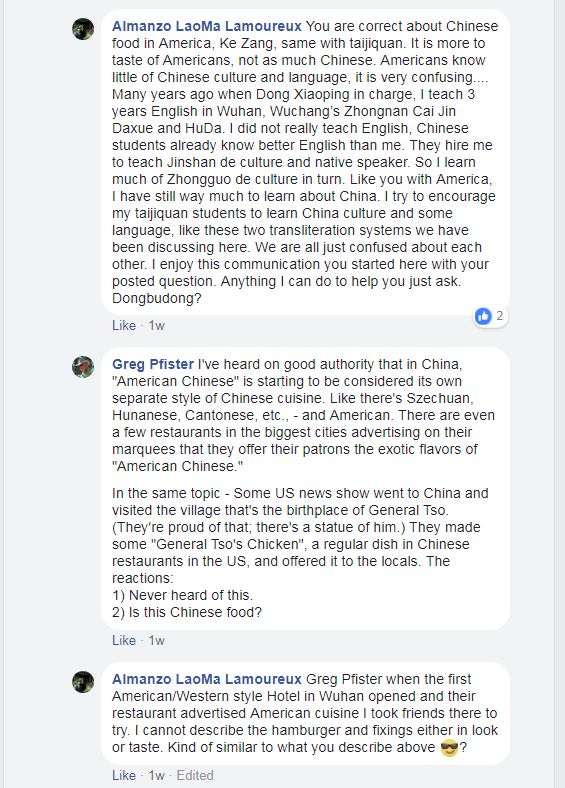In the world of martial arts there are many many many styles! Too many for most to learn all of them - not to mention master them all. Even when you narrow your focus on one discipline (Karate, Wing Chun, Hung Gar..etc), you’ll find many styles with in that discipline. Furthermore - you’ll find many Forms within each style/family!
Take taijiquan for example. There’s Yang, Chen, WuDangShan, WuHao, Sun…and more and more. Within each of those, you’ll find long Forms, short Forms, paired Forms, weapons Forms, paired weapons Forms - etc. It’s enough to make your head spin.
As always, Facebook is a great place for great thinkers to debate about the things they are all experts on. So, we thought we’d bring you food for thought at the beginning of this new year - using a Facebook discussion.
Below are a few snippets of discussion from the “Taijiquan “One Family” Mission” group page on Facebook. For brevity’s sake, I have not included ALL of the comments that can be seen on this discussion. But I tried to include enough to give you an idea of different approaches to this interesting question:
“What is your take on only knowing one form?”
In the Black Bamboo school, we have many forms. We have one taiji long Form, Liehubafa (another internal Form), Tangquan (a hard style empty hand Form) as well as many weapons Forms and push hands paired Forms or drills.
We invite you to consider - why? What is the value (if any) of multiple Forms. If you’ve learned more than one Form, what is your take. If you’ve stuck with one Form, what has been your reasoning. Please join the discussion in the comments below. Or bring your thoughts to class!





























